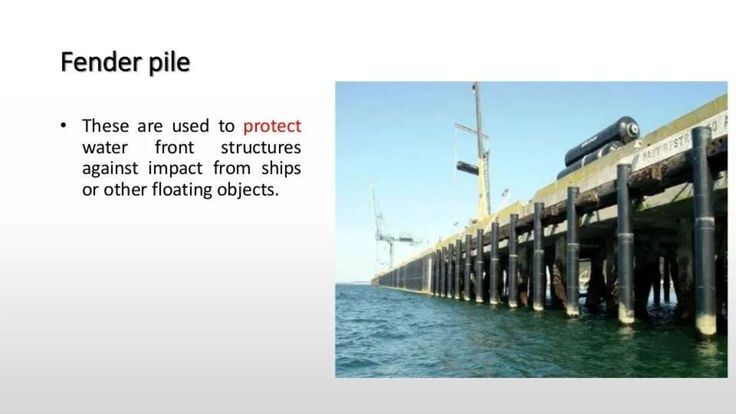When it comes to constructing robust and stable structures, the foundation is the key to success. Among the various foundation types, the Fender pile foundation stands out for its exceptional load-bearing capacity and versatility. We will delve into the details of the fender pile foundation, its design process, and its applications in various engineering projects.
What is a Fender Pile Foundation?
A fender pile foundation is a type of deep foundation that is used to support heavy vertical loads and lateral forces, especially in marine environments. The name “fender” originates from its primary application, which is to act as a protective barrier for marine structures like piers, docks, and bridges, guarding against potential collisions with vessels. However, due to its remarkable load-carrying capacity, the Fender pile foundation has found applications in various other engineering projects as well.
Design and Construction
The design of a Fender pile foundation involves several crucial steps to ensure its stability and durability:
- Soil Investigation: Before commencing any foundation design, a thorough geotechnical investigation of the site is essential. The soil properties, including bearing capacity, shear strength, and compressibility, are determined to select appropriate pile types and dimensions.
- Load Calculation: The next step involves calculating the design loads that the foundation must support. These loads include vertical loads from the superstructure, lateral forces from potential impacts, and other dynamic loads.
- Pile Selection: Based on the soil investigation and load analysis, suitable pile types are chosen. Commonly used materials for fender piles include steel, concrete, and timber.
- Pile Spacing and Arrangement: The spacing and arrangement of piles depend on the magnitude of the loads, soil conditions, and the required structural integrity. Proper pile spacing ensures uniform load distribution and enhances the foundation’s overall performance.
- Pile Installation: Pile installation can be achieved through various methods, such as pile driving, jetting, or drilling. The chosen method should consider the environmental impact and the soil conditions.
- Structural Considerations: The Fender pile foundation’s structural design must account for the anticipated forces and moments. Ensuring the piles are adequately connected to the superstructure.
- Protective Measures: In marine environments, protective measures are necessary to shield the foundation from corrosion due to saltwater exposure.
Applications of Fender Pile Foundation
The versatility of Fender pile foundations allows for their implementation in diverse engineering projects:
- Marine Structures: Fender pile foundations widely use in the construction of piers, wharves, docks, and offshore platforms. Their ability to absorb impact loads makes them ideal for protecting marine structures from potential collisions.
- Bridge Abutments: Fender piles provide essential support and protection for bridge abutments, guarding against accidental collisions by watercraft.
- Building Foundations: In areas with challenging soil conditions or high vertical loads. Fender pile foundations offer a reliable solution for supporting buildings and other structures.
- Retaining Walls: Fender piles can utilize as part of a retaining wall system, especially in waterfront constructions.
- Offshore Wind Farms: The fender pile foundation’s resilience in marine environments makes it a preferred choice for supporting wind turbines in offshore wind farms.
Conclusion
The Fender pile foundation is a robust and versatile deep foundation that finds extensive applications in marine and civil engineering projects. By understanding the design process and its various applications, engineers can make informed decisions regarding its implementation. The fender pile foundation stands as a testament to the importance of innovative foundation solutions in the ever-evolving world of engineering.

